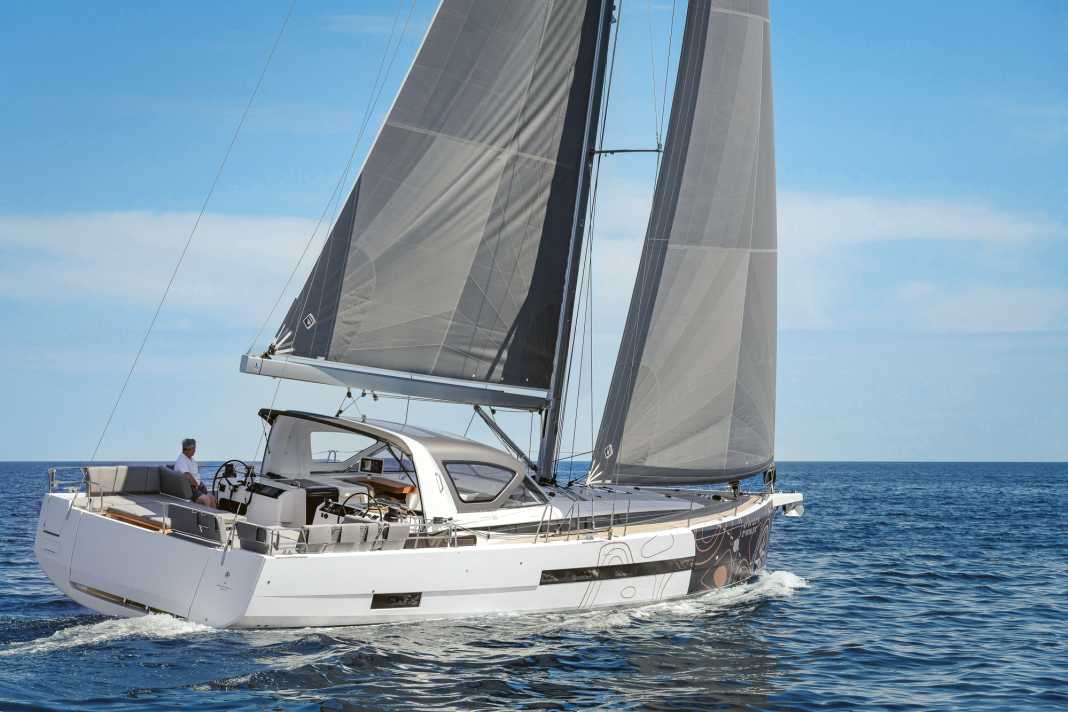




A detailed analysis of the emissions released during the construction and operation of recreational craft does exist. But the report by the trade fair umbrella organisation Icomia was guarded like a state secret until the very end. The 600-page report was published for the Mets equipment trade fair in mid-November - after the editorial deadline. It is unlikely to meet with great approval. Although the industry has woken up when it comes to sustainability, it is still clearly struggling with transparency and the search for the right strategies.
Unlike in the automotive sector, aviation or entertainment and information technology, for example, there is not even a labelling requirement for the resource consumption of yachts. Some shipyards have taken the trouble to determine the ecological footprint of their boats in so-called life cycle assessments. However, their number is small and the results remain almost entirely internal - partly because the shipyards and suppliers have not yet agreed on standardised procedures and methods. As a result, it is only approximately possible to determine the CO² emissions for the manufacture, maintenance and use of yachts, for example, and it is virtually impossible to compare the values.
First revealing approaches
Nevertheless, there are initial approaches, and they are highly informative. However, the best eco-balance study to date by far has not been presented by a series shipyard. It comes from the 11th Hour Racing team led by Charlie Enright and Mark Towill, the winners of The Ocean Race. They measured, calculated and modelled the impact of the construction of their Imoca "Malama" down to the decimal point, the effects of several years of racing and, more importantly, how emissions can be reduced.
The 128-page report is unrivalled in its level of detail and highly exciting. It not only lists the CO² equivalents and other relevant metrics, but also identifies the areas with the greatest potential for sustainability. Although materials and construction methods differ greatly from those used in series boatbuilding, some analogies can be drawn. For example, one of the greatest levers for reducing greenhouse gases is simply to switch the power supply of the shipyard and all suppliers to renewable sources.
Despite some optimised processes, the racer itself emits 553 tonnes of CO² - around twice as much as an Imoca without foils ten years ago. The energy and resource consumption is roughly equivalent to that of 100 mid-range cars. However, 700 tonnes of CO² emissions are added per regatta year, including for transport and the team members' travel.
Using the same method as 11th Hour Racing, British tender manufacturer Williams has had the production of one of its popular models audited. With the help of the MarineShift360 software tool supported by 11th Hour, the Turbojet 325, a fast dinghy often found on yachts from 55 feet upwards, was analysed. During its construction, the lamination of the solid hull bottom causes the highest carbon dioxide content (34 per cent) - very similar to that of sailing boats, by the way. Jet propulsion, including the Rotax engine, accounts for 29 per cent. Over a period of ten years, however, it is the use of the boat that has the greatest impact on the eco-balance (5.6 tonnes of CO² versus 3.2 tonnes for construction).
What is the carbon footprint?
These figures are roughly mirrored in a study carried out by the Beneteau Group for two of its latest boats, also using the MarineShift360 tool. Unsurprisingly, sailboats and motorboats differ the most in terms of their carbon footprint, particularly when in use, with expected advantages for sailboats.
Of course, this does not mean that they are environmentally friendly. The energy required to manufacture the keel alone has a considerable impact on the carbon footprint of seagoing sailing yachts, as do the aluminium mast and the stainless steel standing rigging. But the GRP components also significantly increase the carbon footprint. How does it turn out? According to our sister magazine YACHT, building a well-equipped 45-foot boat is roughly equivalent to building ten SUVs.
Motorboat: Merry Fisher 795



The compact day cruiser with outboard drive is one of the volume models in the Beneteau Group's motorboat segment. Measured in terms of average use, its carbon footprint is, as expected, dominated by operation; when cruising, it consumes around 40 litres per hour - more than twelve times as much as a comparably sized sailing yacht with an engine, which is generally only used during harbour manoeuvres or in calm conditions. In order to significantly improve sustainability, by far the most effective lever lies in the drive, its efficiency and its use. Overall, GRP construction only contributes a tenth of greenhouse gas emissions.
Sailing yacht: Jeanneau Yachts 55



In addition to the Sun Fast 30 One Design this is Jeanneau's latest new development. The innovative design by Philippe Briand has three companionways and therefore maximum privacy for a monohull yacht, as owners and guests can retreat to their own compartments. Although about twice the size of the Merry Fisher, the percentage CO² equivalents for construction and utilisation are quite comparable, even if they differ greatly. GRP construction and other parts are responsible for almost half of the emissions. The shipyard already uses natural-based resins and hemp or linen fibres instead of glass fibres for small, non-structural components.

